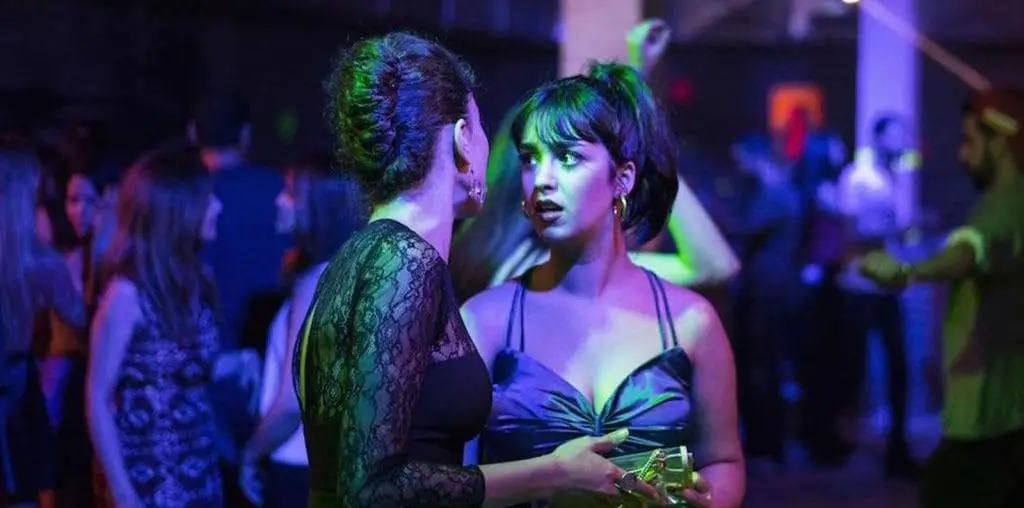
To one segment of society, teenagers are lazy, egocentric, “motoristically” challenged, ungrateful nuisances. To businesses, though, high school kids are self-conscious monetary goldmines just waiting to be exploited. Fully capitalizing on these pockets of profit is part of the storyline in Rusty Nails’s sci-fi horror satire “Acne” (2002). Filmed in black and white and made in part with grants from the Film and Video Department of Columbia College in Chicago, “Acne” takes the issue of skin blemishes to a heady extreme, mixing in elements of an indifferent Shale Oil company, the greedy Mershey Chocolate, and an epidemic of zit heads.
Franny (Tracey Hayes) and Zoe (Rusty Nails) are typical pensive, Dead Kennedys-loving, suburban teenagers whose lives are altered due to exposure to water contaminated by Shale Oil. Rather than morph into zombies, as would be expected or assumed, Franny, Zoe, and a bundle of teenagers have become hosts to acne of the worst kind. It is not the quantity but the quality of pus-filled pimples that render these adolescents victims of horrible DNA mutations and prey to avaricious corporations. Impressively illustrated by the make-up and special effects of John Dummeldinger, Franny, Zoe and peers are burdened with a cranium-covered cyst that demands a constant supply of foods often linked to bad skin.
As the kids are staggering through kitchens and convenience stores in search for candy, butter, and greasy foods that will not be eaten but rubbed directly onto the tops of their heads, an altercation between moralistic and unscrupulous military personnel leads to conversations about going bald and protecting consumers. Though “Acne” brings up the ethics of whether or not the public deserves to know about an infectious outbreak, the film doesn’t completely dehumanize the victims of the disease. Franny and Zoe experience long periods of lucid thoughts and only revert back into zombie-like behavior when they’re hungry. After a while, you get accustomed to this pattern. Even when Zoe repeatedly verbalizes that his and his sister’s condition was the result of big business gone bad, you nearly forget that there’s anything wrong with the teens. “Acne” isn’t about society’s fear of but rather distaste of teenagers. Still, their financial contributions even to a corrupted economic system do not go unnoticed. Society, therefore, tolerates them as far as collective conscious allows. A mutant teenager may retain sufficient human characteristics, but he isn’t “normal.” A cure must be developed, for the good of the public of course.
“Acne” is visually inter-textual and its director acknowledges the multitude of musicians and filmmakers that have influenced him and his film. Tilt, King Face, Subhumans, Operation Ivy, Dead Kennedys, The Ramones, Maya Deren, Jim Jarmusch, David Cronenberg, Roger Corman, Susan Seidelman, Buster Keaton, Preston Sturges, Hal Hartley, and Frank Tashlin are among the many artists that receive credit for being muses. Rusty Nails knows where his ideas come from, that they’re not entirely his own. Yet, “Acne” is far from being a copy-and-paste production. It’s an identification of inspiration that retains the filmmaker’s originality.


